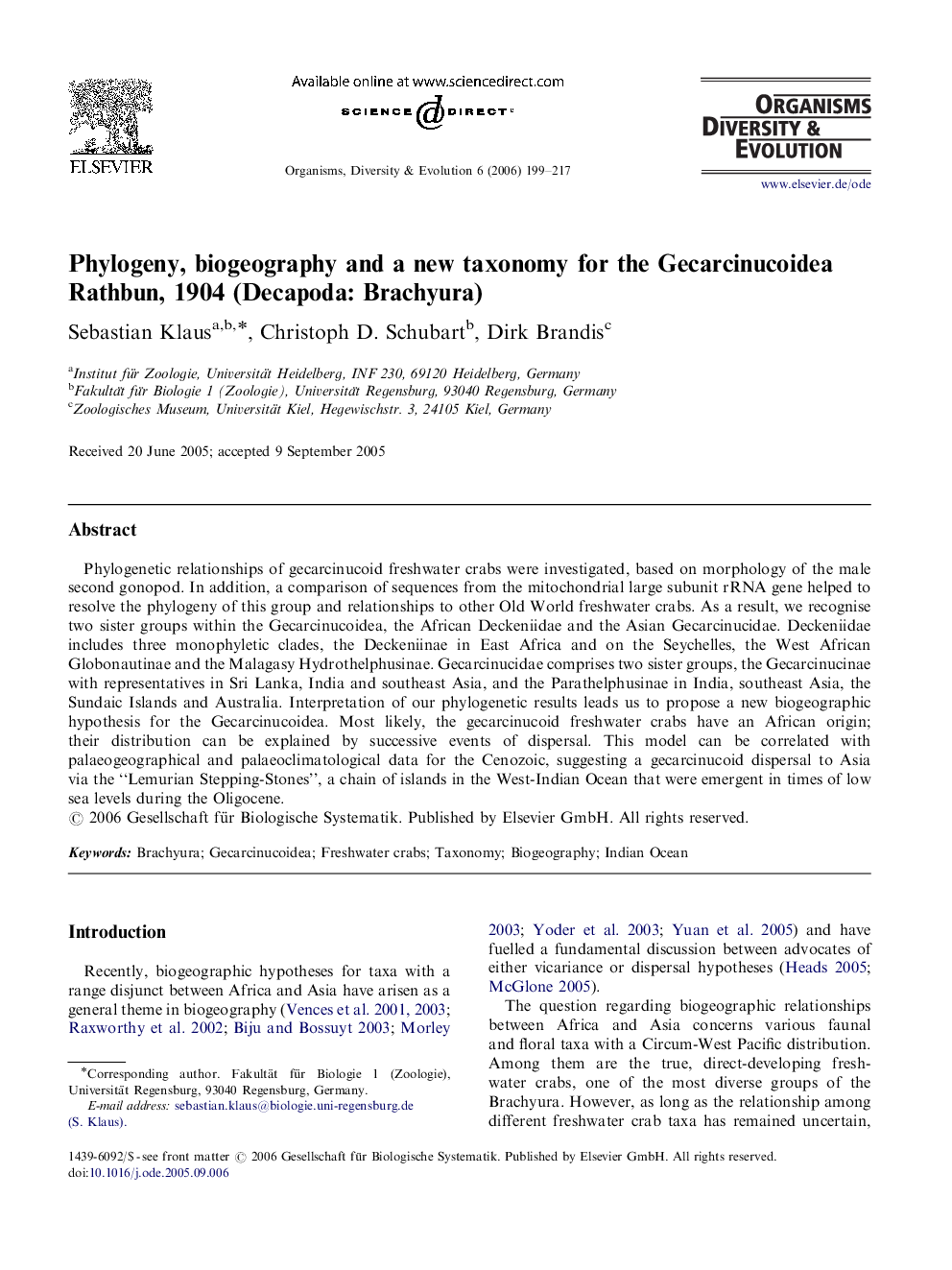| Article ID | Journal | Published Year | Pages | File Type |
|---|---|---|---|---|
| 4458746 | Organisms Diversity & Evolution | 2006 | 19 Pages |
Phylogenetic relationships of gecarcinucoid freshwater crabs were investigated, based on morphology of the male second gonopod. In addition, a comparison of sequences from the mitochondrial large subunit rRNA gene helped to resolve the phylogeny of this group and relationships to other Old World freshwater crabs. As a result, we recognise two sister groups within the Gecarcinucoidea, the African Deckeniidae and the Asian Gecarcinucidae. Deckeniidae includes three monophyletic clades, the Deckeniinae in East Africa and on the Seychelles, the West African Globonautinae and the Malagasy Hydrothelphusinae. Gecarcinucidae comprises two sister groups, the Gecarcinucinae with representatives in Sri Lanka, India and southeast Asia, and the Parathelphusinae in India, southeast Asia, the Sundaic Islands and Australia. Interpretation of our phylogenetic results leads us to propose a new biogeographic hypothesis for the Gecarcinucoidea. Most likely, the gecarcinucoid freshwater crabs have an African origin; their distribution can be explained by successive events of dispersal. This model can be correlated with palaeogeographical and palaeoclimatological data for the Cenozoic, suggesting a gecarcinucoid dispersal to Asia via the “Lemurian Stepping-Stones”, a chain of islands in the West-Indian Ocean that were emergent in times of low sea levels during the Oligocene.
